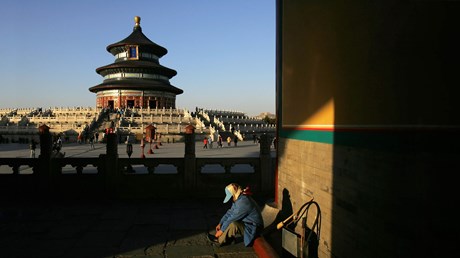What Jesus’ death means for how I make sense of my culture’s traditional religious practices.

If you ever visit the Temple of Heaven in Beijing—ancient China’s largest center for high-level rituals—you might be struck by its lack of Buddhist and Taoist idols. The design of the Chinese place of worship displays some of the characteristics of the ancient Chinese tradition of ritual sacrifice to heaven, which seem to bear many similarities to the rituals for worshiping God recorded by Moses in the Pentateuch of the Old Testament.
No known records exist suggesting that Judaism inspired Chinese spirituality. In fact, a second-century B.C. Confucian classic, The Rites of Zhou (周禮 Zhouli), records these acts of worship, and archaeologists have discovered the bronze ritual vessels with Chinese characters depicting sacrifices of animals such as ox and sheep, confirming that these practices are thousands of years old.
Conducted by the royals until the end of the imperial dynasties in the early 20th century, these official rituals gradually drifted from their Confucian origins. But as a Chinese Christian, rather than grieve this separation, I’m grateful that I know Jesus, whose death supersedes these ancient sacrifices and whose resurrection offers redemption for eternity.
The will of heaven
In 1982, the Chinese American scholar Ray Huang released 1587: A Year of No Significance (萬曆十五年). The bestselling book highlighted the Ming dynasty’s religious practices, including a famous example from 1585 of an emperor using the Temple of Heaven to pray for rain. After months of drought, Emperor Wanli fasted for three days before leading his officials from the imperial palace to the temple and holding a special ceremony for the weather change. Upon arriving at the Temple of Heaven, the Ming dynasty emperor knelt ...
from Christianity Today Magazine
Umn ministry


.gif)

.gif)
.gif)
